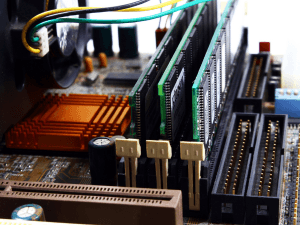Over the years, I’ve seen how overlooking hardware vulnerabilities can completely dismantle otherwise bulletproof cybersecurity strategies.
Software protections dominate conversations, but shrewd attackers exploit loose hardware to infiltrate systems.
From subtle component tweaks to wholesale device swaps, the following hardware vulnerabilities allow criminals access if unchecked.
Equipped with this insight, professionals like myself aim to close these overlooked gaps.
Key Hardware Vulnerabilities in Business
With physical access, an attacker can subtly modify ports or connect new devices to bypass security controls.
Or they may directly replace drives to exfiltrate data.
If modifications appear professional, they go undetected granting the attacker persistent access.
It’s important to look for physical signs of tampering like loose wiring, damaged vents, or mismatched screws.
Isolate any suspect machines pending forensic review.
Catching physical intrusions early is key to limiting damage.
Unchanged Default Passwords
It’s critical to enforce a strict protocols for changing default passwords before installation. Many devices ship with the same default credentials well known to hackers.
Connecting them to networks as-is permits access to criminals.
Once a new smart thermostat arrived covered in protective plastic wrap indicating it was untouched.
But configuration showed the default password remained allowing remote access until changed.
Mandating updates during initial setup is crucial.
Outdated Firmware Risks
Manufacturers rush innovative products to market with security as an afterthought.
The firmware running these devices often contains vulnerabilities only discovered after deployment.
Vendors issue patches, but businesses delay applying them.
Monitor vendor notifications to rapidly test and distribute updates.
When critical flaws emerge, utilize centralized controls to instantly deploy patches across devices.
This system has helps address threats like Ripple20 before disasters occurred.
Security Gaps in Custom Chipsets
While tailored chips maximize data center performance, manufacturers making proprietary silicon invest minimally in security validation.
Glaring vulnerabilities typically remain unaddressed until criminal exploitation.
When evaluating custom silicon, probe vendors extensively regarding design practices. Requiring code reviews, penetration testing, and planned patch support can help avoid disasters.
Security-focused procurement conversations allow your operation to balance innovation with safety.





